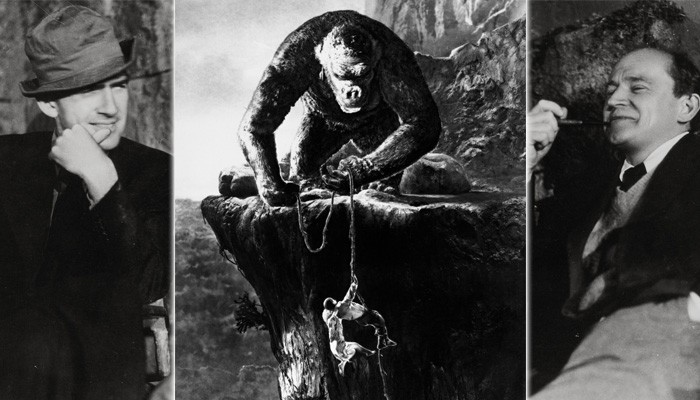
The 63rd San Sebastian Festival will dedicate a retrospective to directors Merian C. Cooper and Ernest B. Schoedsack, masterminds of the iconic King Kong (1933). Merian C. Cooper (1893-1973) and Ernest B. Schoedsack (1893-1979) were, in the golden age of Hollywood, one of the strangest and most exciting creative twosomes ever to come out of Hollywood. The coming edition of the San Sebastian Festival will recover their work in a cycle dedicated to their films.
Acclaimed for generations as the masterminds of the iconic King Kong (1933), Cooper and Schoedsack’s contribution to cinema didn’t stop at this masterpiece. Their career began with two masterpieces in the history of documentary filmmaking, Grass; A Nation’s Battle for Life (1925) and Chang (1927). They later made fantasy, drama, adventure and mystery movies, some of which are now cult titles: The Four Feathers (1929), The Most Dangerous Game (1932), The Last Days of Pompeii (1935), Dr. Cyclops (1940), Son of Kong (1933) and Mighty Joe Young (1949).
GRASS; A NATION’S BATTLE FOR LIFE
MERIAN C. COOPER, MARGUERITE HARRISON, ERNEST B. SCHOEDSACK (USA) 1925
Cooper and Schoedsack’s debut behind the cameras took the shape of this anthropological documentary classic shot in the spectacular landscapes of Iran. The everyday life of the Bakhtiari tribe, in the former Persia, and their migration in search of pastures for their livestock: 50,000 people and their flocks must cross natural obstacles and overcome harsh atmospheric conditions to find food for their animals.
CHANG
MERIAN C. COOPER, ERNEST B. SCHOEDSACK (USA) 1927
Cooper and Schoedsack’s second cinematic adventure took them to the forests of Thailand. A documentary with elements of fiction where the directors give free rein to their passion for exotic settings and sense of spectacle thanks to this fascinating tale of a man’s struggle against the beast.
THE FOUR FEATHERS
MERIAN C. COOPER , ERNEST B. SCHOEDSACK , LOTHAR MENDES (USA) 1929
Schoedsack and Cooper made the first sound adaptation of the famous colonial novel by A.E.W. Mason, taken to the screen on several occasions. The Sudanese adventures of Lieutenant Faversham, accused of cowardice by his friends, are the perfect excuse for the directors to impress upon the original narration the verve and dynamism so typical of their films. This was their first collaboration with a recurring actress in their filmography, Fay Wray.
RANGO
ERNEST B. SCHOEDSACK (USA) 1931
Two years before shooting their masterpiece, King Kong, Cooper and Schoedsack fantasized about relations between men and monkeys in this tale of adventures set in the Sumatran forests with its anthropological vocation. However, as was usual in their films, their ability to narrate fables always imposed itself upon the simple observation of reality.
THE MOST DANGEROUS GAME
ERNEST B. SCHOEDSACK, IRVING PICHEL (USA) 1932
Adaptation of a classic tale by Richard Connell, Cooper and Schoedsack used this film as a testing ground for the mind-boggling nightmare atmospheres that would culminate in King Kong the following year, since both titles were shot on the same sets. Adventure cinema merges with a gothic tale in a cruel, savage film of frenzied scenes that still raise eyebrows even today.
BLIND ADVENTURE
ERNEST B. SCHOEDSACK (USA) 1933
Cooper and Schoedsack abandon the exotic settings so often found in their films to take us to the London of detective mysteries. Here, their fetish actor, Robert Armstrong, plays an American lost in the London fog ensnared in a complicated plot that feels like something out of an Alfred Hitchcock movie.
KING KONG
MERIAN C. COOPER, ERNEST B. SCHOEDSACK (USA) 1933
The best known monster film in the history of cinema, a mythical title that gave us one of the most lasting icons of the seventh art. The sad tale of the giant gorilla who loses his kingdom for an impossible love is not only a dreamlike take on the Beauty and the Beast myth, recovered by intellectuals and artists all over the world, but a fabulous display of special effects, spectacle, imagination and poetry in its purest state.

Leave a Reply
You must be logged in to post a comment.